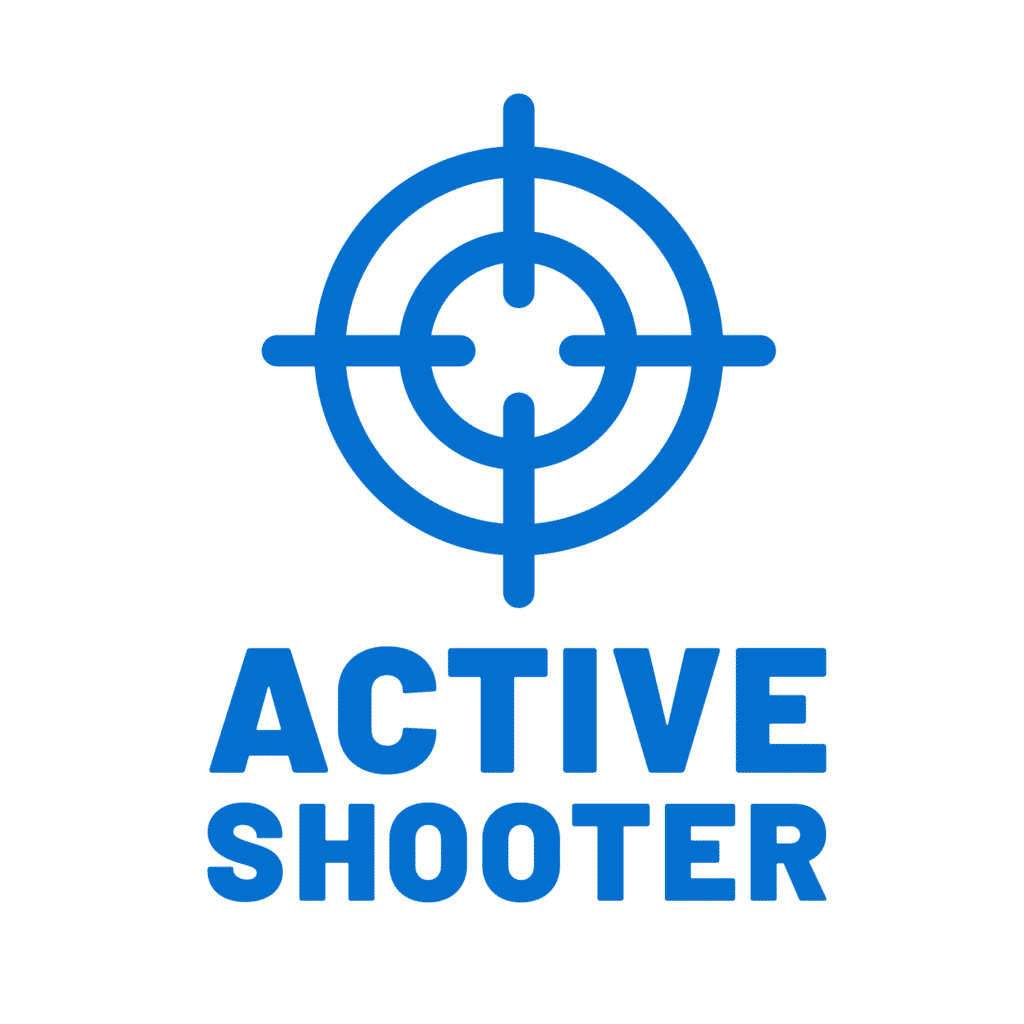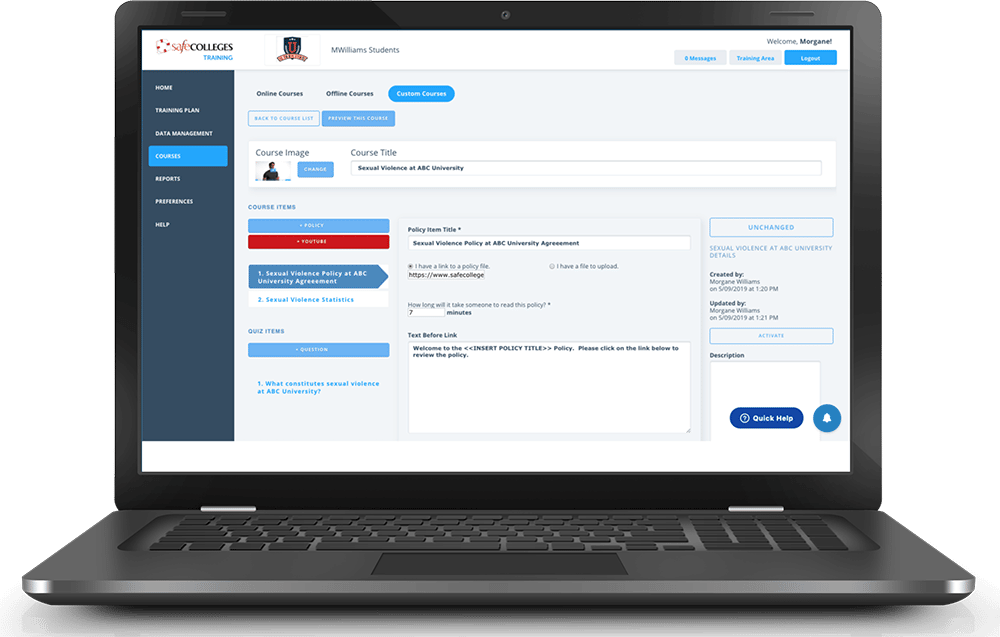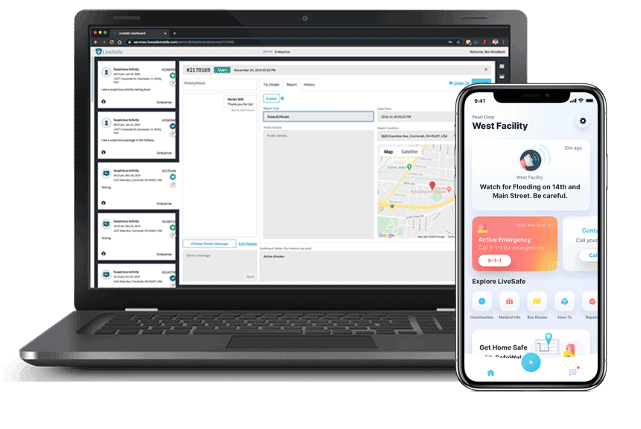About Active Shooter Incidents
College and university campuses are presumed to be safe havens for students, faculty, and staff; a place to learn, to meet new people, and to be a part of new experiences. Unfortunately, as time moves forward campuses have become targeted areas for gun violence and active shooter incidents, sometimes referred to as mass shootings.
Active shooter scenarios in the United States aren’t a new phenomenon and don't seem to be going away as they are becoming increasingly normal. These incidents usually take place at soft targets, areas that carry limited security measures to protect members of the public - for example: schools, college or university campuses, movie theaters, concert areas, etc.
Key Topics for Active Shooter Incidents

Gun Violence Facts
Understanding Active Shooter Incidents
Run, Hide, Fight Protocol
ALICE Protocol
Preparing for the Aftermath of Tragedy
Fast Facts
To better understand the importance of being prepared for an active shooter incident and reducing gun violence, let’s break down the numbers regarding gun violence and active shooter events on college and university campuses:
15 - Active shooter incidents have occurred at higher education institutions since 2000.
70 - The amount of people who have lost their lives at higher education institutions due to active shooter incidents.
188 - Gun violence incidents have occurred at higher education institutions since 2000.
200 - The amount of people who have lost their lives at higher education institutions due to gun violence.
What We Know
A recent study by the FBI confirms what we all know - the rate of active shooter incidents in the United States has increased, now averaging more than one per month. Schools are the second most common area for one to take place in at 20.8%.
It's difficult to prevent active shooter incidents, administrators should focus on being able to effectively respond or react to an active shooter incident. There are many different methods to responding, and surviving, an active shooter incident on campus. The two most popular are Run, Hide, and Fight and ALICE.
In the five largest-casualty events referenced in the FBI study, (Northern Illinois University; Sandy Hook Elementary School; Fort Hood Army Base; Virginia Polytechnic and State University; and the Century 21 Theater) the police were on scene in about 3 minutes; yet, a substantial number of people still were shot and injured or killed,” the report claims.
That’s why it’s essential that campus administrators, staff, and students be properly trained for the possibility of violent situations on your campus, so they know how to ideally prevent such an incident, or if one should occur, minimize the loss of life.
Run, Hide, Fight Protocol
Run, Hide, and Fight was created by the Department of Homeland Security to better the odds of survival for those that have fallen victim to an active shooter situation.
RUN - Getting as much distance between you and the shooter is the top priority. If it's safe to do so, warn others on your way and call 911.
HIDE - If you can't get away from the shooter safely, it's important to find a place to quietly hide. If you can, block the windows, lock the doors, and turn off the lights. Stay in place until law enforcement arrives.
FIGHT - This option is your last resort. If you are in immediate danger, defend yourself. Commit to your actions and aggressively do whatever you can to stop the shooter. Find makeshift objects to distract or disarm the shooter.
To learn more about Run, Hide, and Fight, click here. Make sure to learn more about our Student and Employee Run, Hide, Fight course.
ALICE PROTOCOL
The ALICE protocol is a popular method of active shooter training because it questions the "lockdown-only" protocol.
Alert - Recognize the signs of danger.
Lockdown - If it's unsafe to flee, make sure to barricade entries to your location.
Inform - Clearly communicate to others through the safest way possible, whether that's via text, PA, or phone calls.
Counter - Create a distraction, noise or movement, that will reduce the shooter's likelihood of knowing where you are.
Evacuate - If it's safe to do so, make sure to get as far away from the shooter as you can or to a safe area.
Basic explanations and definitions are located above. To learn more about ALICE training, please click here. Make sure to learn more about our Student and Employee Active Shooter course.
Here’s How Vector Solutions Can Help
Vector Solutions offers courses that can be used to train students and employees on active shooter incidents:

- Active Shooter - provides information on how these incidents occur and how they may be more effectively prevented by reviewing facts, prevention strategies, and what to do if an incident occurs.
- Active Shooter: Run, Hide, Fight - familiarizes students and employees with warning signs and the run, hide, fight procedure.

The Vector LiveSafe Safety Communications Platform and Mobile App can be used to prevent and investigate sexual assault, hazing, discrimination, threats of violence and more on your campus. It lets students, faculty and staff anonymously report tips to their administration 24/7 from any web-enabled device. Users can submit tips through the phone, text, email and website.




